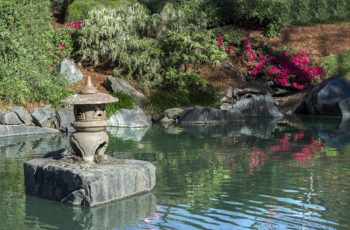Foundational Elements of Japanese Landscape Design
Japanese landscape design revolves around combining the fundamental elements of the natural world with clean, elegant, and simple construction materials. Do your best not to disturb the natural flow of your landscape. However, work to increase and elevate both the utility and the spirit of the space that you are working with.
If you’ve been dreaming about creating your very own Japanese garden in your plot of land, you want to take full advantage of as many of the fundamentals of Japanese landscape design as possible. We outline some of the core and foundational basics of Japanese landscape design below!
Keep It Simple
The most important thing you can do when you set out to design a Japanese garden is to fully embrace the idea of keeping things as simple. Minimalism is the key. Go overboard with any one particular element in your Japanese garden and you’ll have detracted from the entirety of the space.
A very light touch is essential when you’re talking about Japanese landscape design.
Related: Five Garden Styles That Homeowners Love
Use Natural and Traditional Materials as Much as Possible
Though nothing is stopping you from taking full advantage of modern construction materials, tools, and technology to bring your Japanese garden to life, if you want to create a truly authentic experience you’re going to want to make sure that you create all of your “standing structures” and features out of natural and traditional materials.
This doesn’t mean you have to use bamboo in an area where bamboo would be indigenous. However, you should strive to take advantage of materials that are native and indigenous to your local area. Make use of available materials where you are constructing the garden in the first place.
Related: Beautiful Japanese Garden Designs for Small Spaces
Use Water as Much as Possible
If you have the opportunity to create water features, elevate water features, or modify water features you’ll want to do exactly that – making your water features (your pond, your creek, your river, or your fountain) a foundational aspect of your Japanese garden.
Water is a big part of Japanese landscape design. It’s important that you don’t go overboard or implement water features where they aren’t congruent in a particular space. But, if you’re able to bring water into your Japanese garden the entire aesthetic and atmosphere of that garden will be improved significantly across the board.
Take advantage of these design ideas and you won’t have to worry about your Japanese garden lacking any authenticity.


